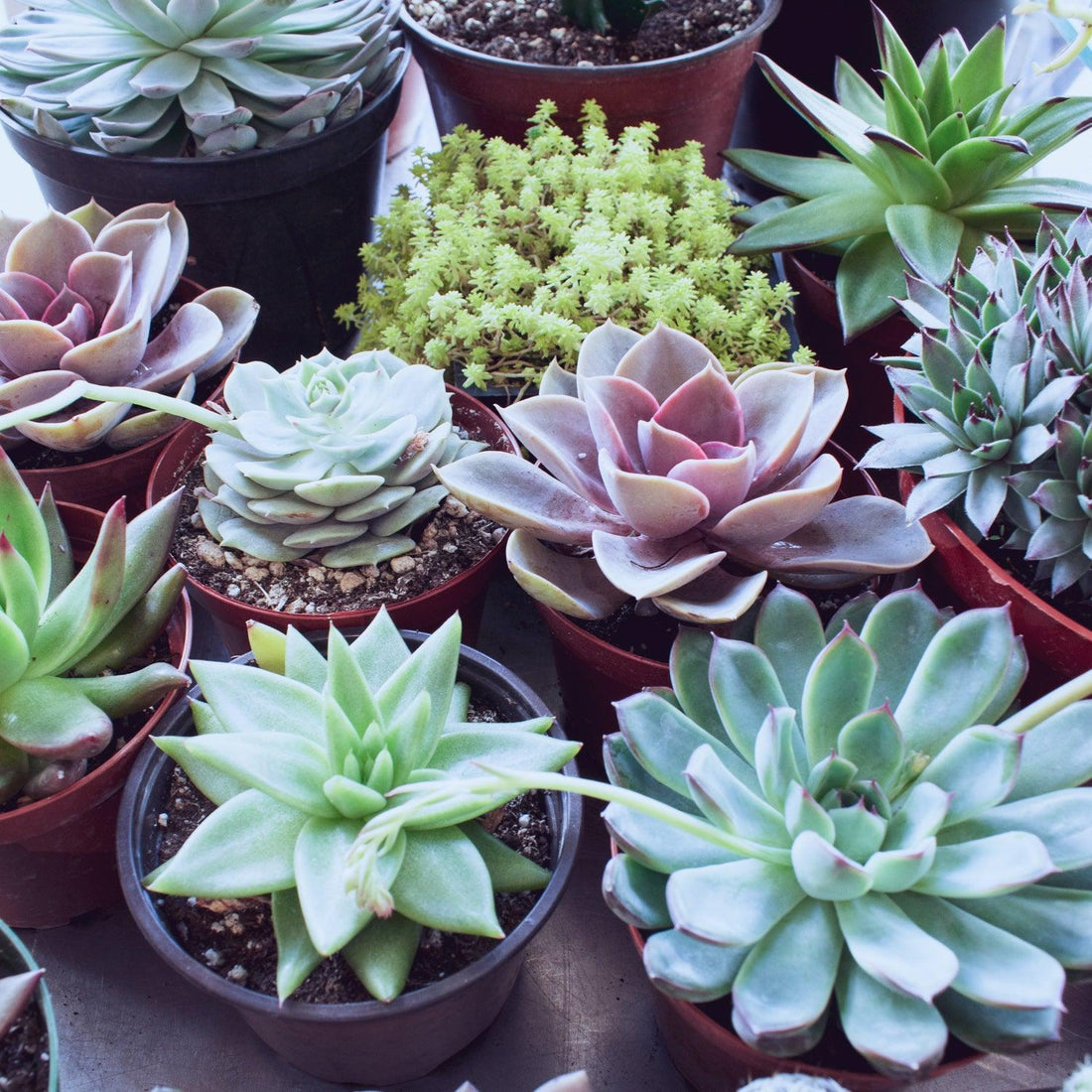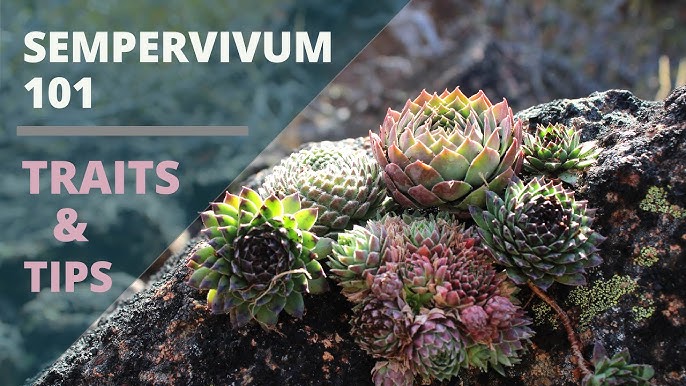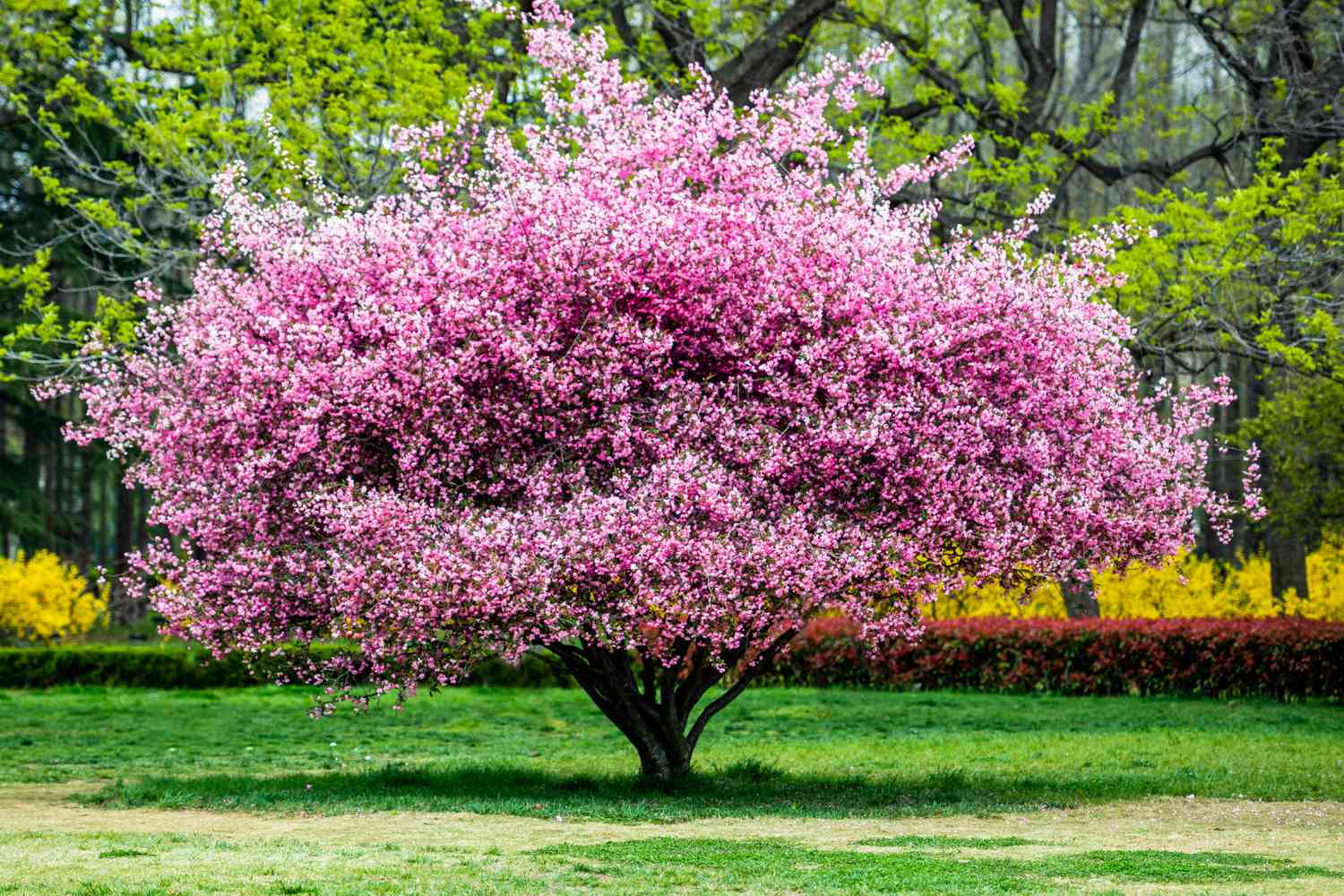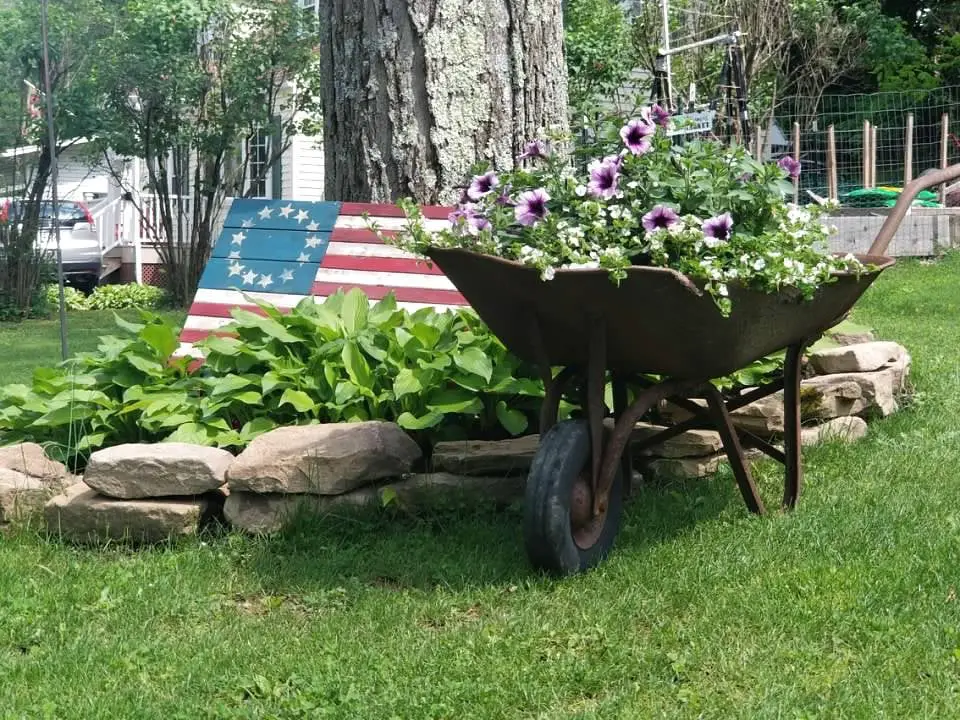Hens and chicks are low-maintenance succulents ideal for beginners. They thrive in well-draining soil and bright, indirect light.
Hens and chicks, also known as Sempervivum, are hardy succulents perfect for novice gardeners. These plants are easy to care for and require minimal attention. They grow well in various environments, making them versatile additions to your garden or home.
Their unique rosette shape and ability to spread quickly make them a popular choice. Ensure they receive adequate sunlight and use well-draining soil to prevent root rot. With proper care, hens and chicks can thrive and multiply, adding natural beauty to any space. This guide will help you understand the basics of caring for these resilient succulents.
Introduction To Hens And Chicks
Hens and chicks are popular succulents known for their unique appearance. They are easy to care for and perfect for beginners. These plants add charm to any garden or indoor space.
What Are Hens And Chicks?
Hens and chicks belong to the Sempervivum family. The “hen” is the main plant, and the “chicks” are the small offshoots. They thrive in various environments and require minimal care.
These succulents are drought-tolerant and can survive in poor soil. Their rosette shape helps them store water, making them resilient in dry conditions.
Popular Varieties
There are many varieties of hens and chicks, each with unique characteristics. Below are some popular types:
| Variety | Characteristics |
|---|---|
| Sempervivum tectorum | Common variety, green rosettes with red tips. |
| Sempervivum arachnoideum | Known as the cobweb houseleek, has white web-like hairs. |
| Sempervivum ‘Ruby Heart’ | Deep red rosettes, striking and vibrant. |
These varieties can add color and texture to your garden. Choose the type that best fits your aesthetic preferences.

Credit: kellogggarden.com
Choosing The Right Soil
For Hens and Chicks, selecting the proper soil is essential. These succulents thrive in specific soil conditions. The right soil ensures their health and growth.
Soil Composition
Hens and Chicks need soil with excellent drainage. This prevents root rot, a common issue in succulents. The soil should be loose and airy. A good mix includes sand, perlite, and organic matter. These components help create the perfect environment.
Best Soil Mixes
Creating the best soil mix involves combining key ingredients. Here are some recommended soil mixes:
- Equal parts of cactus soil and coarse sand.
- One part potting soil, one part perlite, and one part sand.
- Two parts coarse sand, one part potting soil, and one part gravel.
These mixes ensure that Hens and Chicks get the right nutrients. They also provide the necessary drainage and aeration.
Planting Techniques
Planting techniques for hens and chicks are crucial for their growth. Knowing the right methods helps these succulents thrive. This section covers essential planting tips.
Potting Vs. Ground Planting
Choosing between potting and ground planting depends on your space. Potting is ideal for small gardens or indoor settings. Use a container with good drainage. This prevents root rot. Fill the pot with succulent soil mix.
Ground planting suits larger gardens. Select a sunny spot with well-draining soil. Hens and chicks do not like wet feet. Prepare the soil by mixing in sand or gravel. This improves drainage.
Spacing Tips
Proper spacing ensures healthy growth. In pots, space plants 2-3 inches apart. This allows room for growth and airflow.
In the ground, space them 4-6 inches apart. This prevents overcrowding and encourages spread. Overcrowded plants struggle for nutrients and sunlight.
| Planting Method | Spacing | Benefits |
|---|---|---|
| Potting | 2-3 inches | Ideal for small spaces |
| Ground Planting | 4-6 inches | Encourages spread |
Follow these tips for successful planting. Your hens and chicks will flourish.

Credit: goldleafbotanicals.ca
Watering Guidelines
Proper watering is crucial for the health of your hens and chicks. These popular succulents thrive with specific care, ensuring they stay vibrant and healthy. Let’s dive into the essential watering guidelines you need to follow.
Frequency Of Watering
Hens and chicks require minimal watering. Overwatering can lead to root rot. The general rule is to water them once every two weeks.
During the summer, check the soil. If it feels dry, it’s time to water. In winter, reduce watering to once a month. The soil should always be allowed to dry out completely between waterings.
Signs Of Overwatering
Overwatering can harm your succulents. Look for these signs:
- Soft, mushy leaves
- Yellowing foliage
- Foul odor from the soil
- Roots turning black or brown
If you notice these signs, stop watering immediately. Allow the soil to dry out completely before the next watering session.
| Signs | Indication |
|---|---|
| Soft, mushy leaves | Excess water |
| Yellowing foliage | Waterlogged soil |
| Foul odor | Root rot |
| Black or brown roots | Severe root rot |
Proper watering ensures your hens and chicks thrive. Follow these guidelines for a healthy succulent garden.
Light And Temperature Requirements
Understanding the light and temperature requirements for your hens and chicks is crucial. These factors play a significant role in their overall health and growth. This section will help you provide the best conditions for your succulents.
Ideal Light Conditions
Hens and chicks thrive in bright light. They need at least six hours of sunlight each day. Place them on a sunny windowsill or in a well-lit area. If growing outdoors, they do well in full sun. Too much shade can cause them to lose their vibrant color. Ensure they receive enough light to stay healthy and beautiful.
Temperature Tolerance
Hens and chicks are hardy plants. They can tolerate a range of temperatures. These succulents can survive in temperatures as low as -20°F (-29°C). In hot climates, they do well in temperatures up to 90°F (32°C).
| Condition | Temperature Range |
|---|---|
| Cold Tolerance | -20°F (-29°C) |
| Heat Tolerance | 90°F (32°C) |
In extremely hot conditions, provide some afternoon shade. This helps prevent sunburn on the leaves. During winter, these succulents can remain outside. They can tolerate frost and snow, making them ideal for various climates.
Fertilizing Tips
Fertilizing your Hens and Chicks can help them grow strong and healthy. These succulents are low-maintenance but benefit from a little extra care. Let’s explore the best times and types of fertilizers to use.
When To Fertilize
Spring and early summer are the best times to fertilize. During these seasons, the plants are in their active growing phase. Avoid fertilizing in the winter when growth slows down. Over-fertilizing can harm your succulents, so be careful.
Types Of Fertilizers
Use a balanced, water-soluble fertilizer for best results. A 10-10-10 or 20-20-20 ratio works well. Dilute the fertilizer to half strength to avoid burning the roots.
- Liquid Fertilizers: Easy to mix with water. Provides quick nutrients.
- Granular Fertilizers: Slow-release. Provides nutrients over time.
- Organic Fertilizers: Natural option. Good for the soil.
| Type | Advantages | Disadvantages |
|---|---|---|
| Liquid | Quick absorption, easy to use | Needs frequent application |
| Granular | Long-lasting, slow release | Can be hard to measure |
| Organic | Natural, improves soil quality | May act slower |
Always follow the instructions on the fertilizer package. Too much fertilizer can damage your plants. A little care goes a long way in keeping your Hens and Chicks thriving.
Common Pests And Diseases
Hens and Chicks, also known as Sempervivum, are loved for their easy care. Yet, they can still fall prey to common pests and diseases. Knowing how to identify and prevent these issues can keep your succulents healthy.
Identifying Pests
Several pests can target Hens and Chicks. Here are the most common ones:
- Aphids: Small, green insects found on new growth.
- Mealybugs: White, cotton-like insects on leaves.
- Spider Mites: Tiny red or brown pests that create webs.
Look for signs like yellowing leaves or sticky residue.
Disease Prevention
Preventing diseases starts with proper care. Follow these tips:
- Watering: Water only when the soil is dry.
- Air Circulation: Ensure good airflow around the plants.
- Soil: Use well-draining soil to prevent root rot.
Inspect your plants regularly to catch problems early.
| Pest | Identification | Solution |
|---|---|---|
| Aphids | Green insects on new growth | Spray with soapy water |
| Mealybugs | White, cotton-like insects | Use rubbing alcohol on a cotton swab |
| Spider Mites | Tiny red or brown pests, webs | Increase humidity, use miticide |
Proper care and regular inspection are key to healthy succulents.
Propagation Methods
Hens and Chicks are popular succulents known for their easy propagation. They can be propagated through various methods. This guide covers two primary methods: Offset Removal and Seed Propagation. These methods are simple and effective for beginners.
Offset Removal
Offset removal is the most common way to propagate Hens and Chicks. This method uses the small plants, or “chicks,” that grow around the mother plant, or “hen”. Follow these steps:
- Wait until the chicks are at least one-third the size of the hen.
- Use a clean, sharp knife to cut the chick from the hen.
- Ensure you include some roots with the chick.
- Allow the cut chick to dry for a day to form a callous.
- Plant the chick in well-draining soil.
- Water sparingly until it establishes roots.
Seed Propagation
Seed propagation is another method to grow Hens and Chicks. It requires more time and patience but can be rewarding. Here’s how:
- Collect seeds from mature plants or buy them from a nursery.
- Fill a shallow tray with well-draining soil.
- Sprinkle the seeds evenly over the soil.
- Lightly press the seeds into the soil, but do not bury them.
- Mist the soil lightly to keep it moist.
- Place the tray in a bright, warm location.
- Seeds will germinate in about two to three weeks.
Using these methods, you can easily propagate Hens and Chicks. Offset removal is fast and reliable. Seed propagation offers a fun challenge. Happy gardening!
Seasonal Care
Caring for hens and chicks requires understanding their seasonal needs. Different seasons demand different approaches to keep your succulents healthy. This section will guide you through the essentials of seasonal care.
Winterizing Your Succulents
Hens and chicks can withstand cold temperatures but need some protection. Here are steps to ensure they thrive during winter:
- Move your pots to a sheltered location.
- Water sparingly as they need less moisture.
- Avoid fertilizing during this season.
- Cover with frost cloth if temperatures drop below freezing.
Check your plants regularly for signs of frost damage. Remove any dead leaves promptly.
Summer Care
Summer is a growing season for hens and chicks. They need more attention to stay healthy:
- Water frequently, but ensure proper drainage.
- Provide partial shade during peak sunlight hours.
- Fertilize lightly once at the beginning of the season.
- Check for pests like aphids and treat immediately.
Monitoring your succulents during summer helps them grow robustly. Ensuring they get enough water and shade is crucial.
| Season | Action |
|---|---|
| Winter | Move indoors, water less, avoid fertilizing, cover if freezing |
| Summer | Water often, provide shade, light fertilizer, check for pests |

Credit: gardenerspath.com
Troubleshooting Common Issues
In this section, we will address common issues faced when caring for hens and chicks succulents. Troubleshooting these problems will ensure your plants stay healthy and vibrant.
Dealing With Root Rot
Root rot is a common issue in hens and chicks succulents. Overwatering often causes it. Follow these steps to fix root rot:
- Remove the plant from the soil.
- Inspect the roots for brown, mushy parts.
- Trim away the affected roots with clean scissors.
- Allow the plant to dry for 24 hours.
- Repot in well-draining soil.
To prevent root rot, ensure the pot has drainage holes. Water the plant only when the soil is dry.
Fixing Leggy Growth
Leggy growth occurs when hens and chicks stretch out due to insufficient light. Follow these steps to fix leggy growth:
- Move the plant to a sunny location.
- Ensure it gets at least 6 hours of sunlight daily.
- Trim the elongated stems with clean scissors.
- Propagate the cuttings in new soil.
To keep your plant compact, rotate the pot regularly. This ensures even light exposure on all sides.
Frequently Asked Questions
What Are Hens And Chicks Succulents?
Hens and chicks are popular, hardy succulents. They grow in rosette clusters. The “hen” produces smaller “chicks. “
How Often Should I Water Hens And Chicks?
Water hens and chicks sparingly. Allow the soil to dry out completely between watering. Overwatering can cause root rot.
Do Hens And Chicks Need Full Sun?
Yes, hens and chicks thrive in full sun. They require at least six hours of sunlight daily for optimal growth.
How Do I Propagate Hens And Chicks?
Propagation is easy. Separate the “chicks” from the “hen” and replant them. They will root quickly in well-drained soil.
Conclusion
Caring for hens and chicks is simple and rewarding. These hardy succulents thrive with minimal care. Just remember to provide well-draining soil, adequate sunlight, and occasional watering. With these basic tips, even beginners can enjoy the beauty and resilience of hens and chicks in their garden or home.
Happy gardening!





